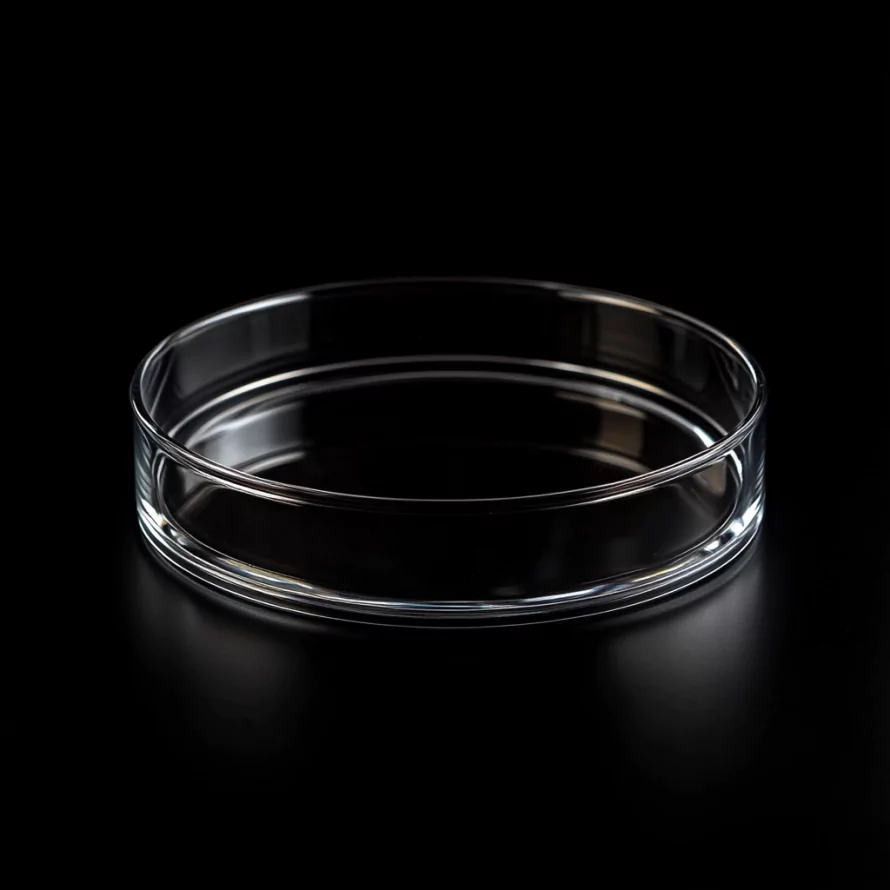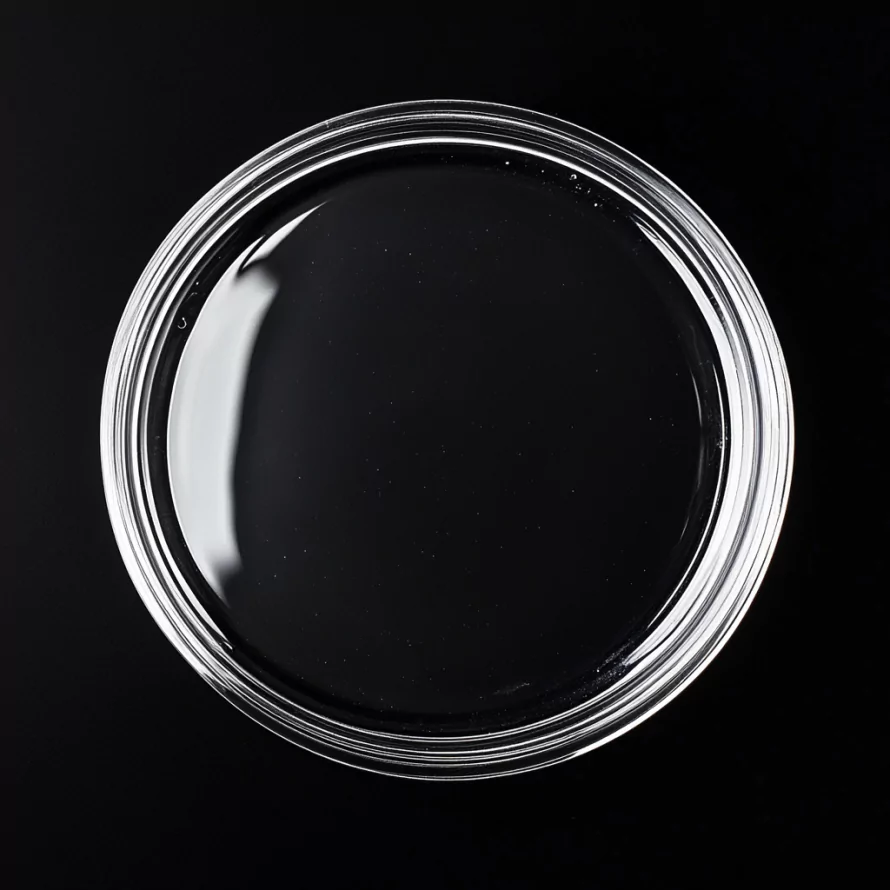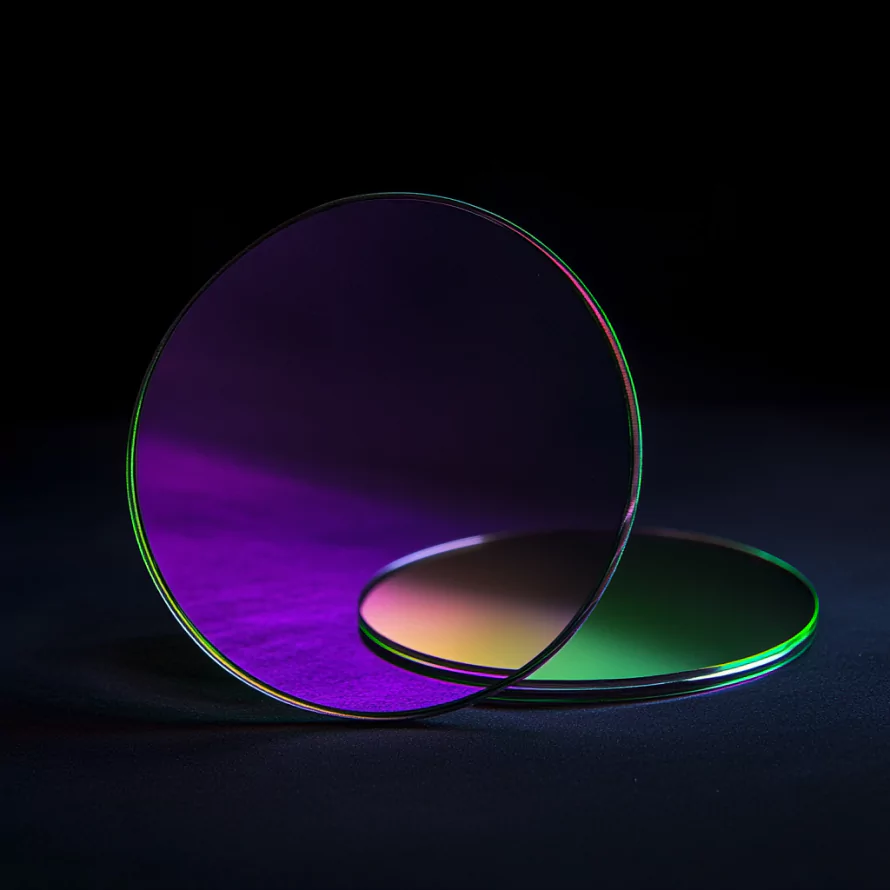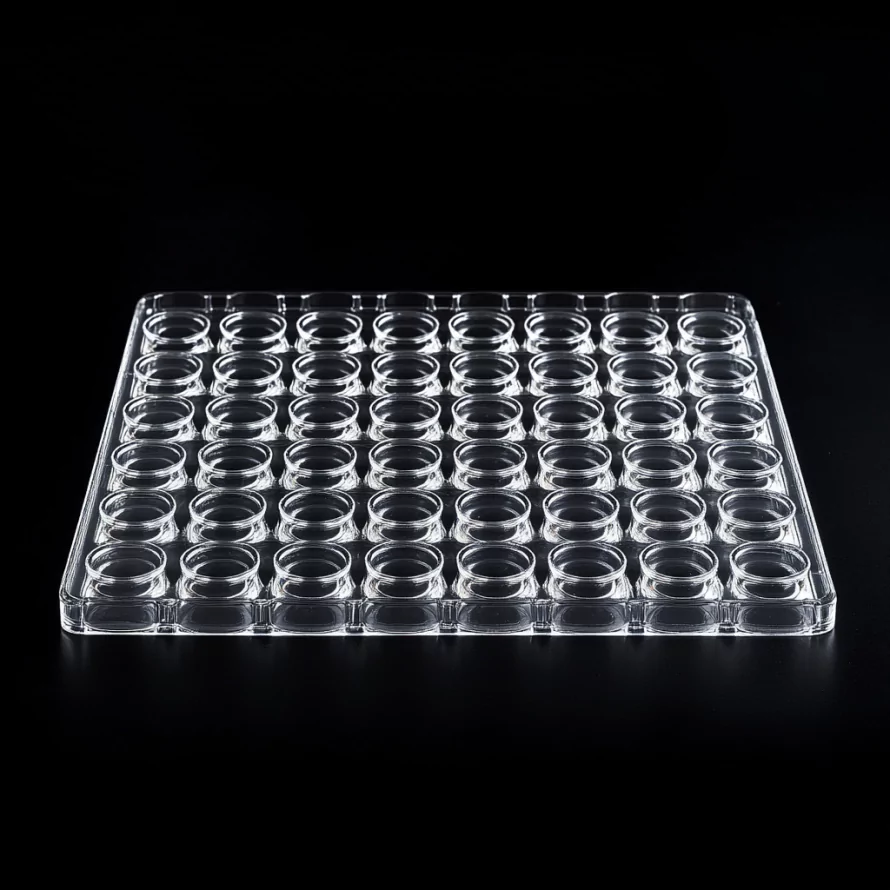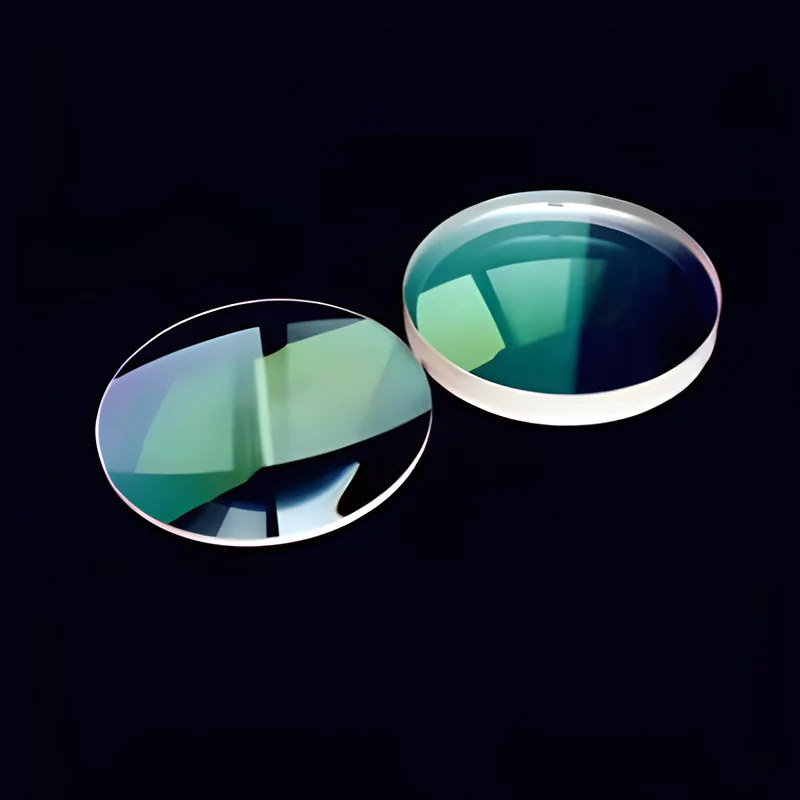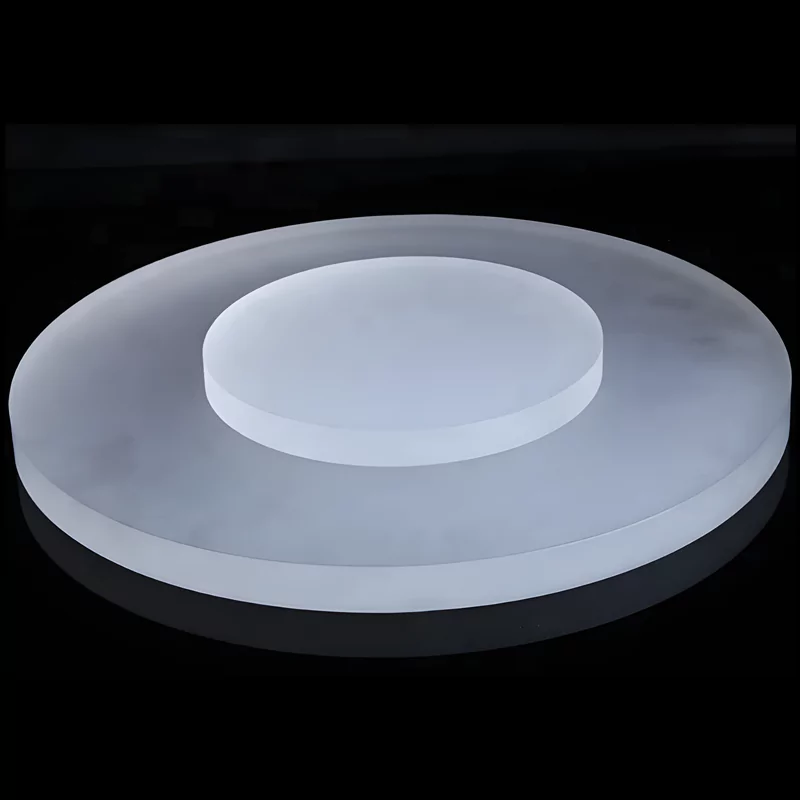- Ev
- /
- Türleri
- /
- Kuvars Plaka
- /
- Isıya Dayanıklı Şeffaf Kuvars...
Isıya Dayanıklı Şeffaf Kuvars Cam Laboratuvar Kabı -TOQUARTZ®
Şeffaf Kuvars Cam Laboratuvar Çanağının Temel Özellikleri
TOQUARTZ® şeffaf kuvars laboratuvar sınıfı tabaklar, yüksek saflıkta silikadan üretilmiştir ve standart cam eşyaların yetersiz kaldığı zorlu laboratuvar ve endüstriyel uygulamalarda olağanüstü performans sunar.
Olağanüstü Termal Kararlılık
Deformasyon veya çatlama olmadan 1600°C'ye kadar sıcaklıklara dayanır, yüksek sıcaklıkta malzeme işleme ve termal analiz uygulamaları için idealdir.
Mükemmel Optik Şeffaflık
≥90% görünür ve UV spektrumunda geçirgenlik, malzeme bütünlüğünü korurken reaksiyonların ve süreçlerin net bir şekilde gözlemlenmesini sağlar.
Yüksek Malzeme Saflığı
99,99 SiO₂ saflığı, ultra temiz koşullar gerektiren hassas deneyler ve prosesler için minimum kontaminasyon sağlar.
Üstün Kimyasal Direnç
Asitlere, alkalilere, erimiş tuzlara ve florlu gazlara karşı son derece dayanıklıdır, diğer malzemelerin bozulduğu aşındırıcı ortamlarda bütünlüğünü korur.
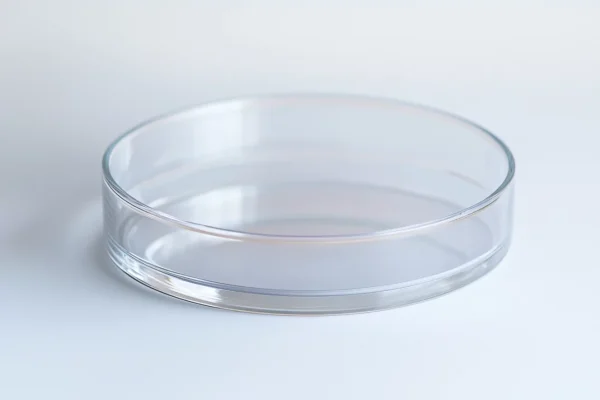
- 99,99% SiO₂ Saflık
- UV-Visible-IR Şeffaflık
- Üstün Kimyasal Kararlılık
Şeffaf Kuvars Laboratuvar Çanağının Teknik Özellikleri ve Boyutları
İster yüksek sıcaklıkta sinterleme için hassas mühendislik ürünü bir kuvars cam yuvarlak laboratuvar kabına, ister aşındırıcı ortam uyumluluğu için erimiş kuvars kare laboratuvar sınıfı bir kaba ihtiyacınız olsun, TOQUARTZ® boyutsal kararlılık, saflık ve uygulamaya özel güvenilirlik sağlar.
Kuvars Cam Yuvarlak Laboratuvar Çanağı Boyutu
| Kuvars Cam Yuvarlak Laboratuvar Kabı | ||||
| Model | Dış Çap (mm) | Yükseklik (mm) | Duvar Kalınlığı (mm) | Si2O'nun Saflığı(%) |
| AT-QTZ-D001 | 8 | 4 | 1-1.8 | 99.95-99.99 |
| AT-QTZ-D002 | 10 | 5.5 | 1.5-2.5 | 99.95-99.99 |
| AT-QTZ-D003 | 15 | 7 | 2-3 | 99.95-99.99 |
| AT-QTZ-D004 | 20 | 8 | 2-4.5 | 99.95-99.99 |
| AT-QTZ-D005 | 30 | 6 | 2.5 | 99.95-99.99 |
| AT-QTZ-D006 | 50 | 15 | 3-5 | 99.95-99.99 |
| AT-QTZ-D007 | 85 | 18 | 5-7 | 99.95-99.99 |
| AT-QTZ-D008 | 100 | 20 | 5-7 | 99.95-99.99 |
| AT-QTZ-D009 | 120 | 25 | 7-10 | 99.95-99.99 |
| AT-QTZ-D010 | 180 | 30 | 7-10 | 99.95-99.99 |
| AT-QTZ-D011 | 260 | 35 | 7-10 | 99.95-99.99 |
Erimiş Kuvars Kare Laboratuvar Sınıfı Çanak Boyutu
| Kaynaşmış Kuvars Kare Laboratuvar Sınıfı Çanak | |||||
| Model | L (mm) | W (mm) | H(mm) | Duvar Kalınlığı (mm) | Si2O'nun Saflığı(%) |
| AT-QTZ-F001 | 30 | 20 | 5 | 2 | 99.95-99.99 |
| AT-QTZ-F002 | 40 | 40 | 8 | 3 | 99.95-99.99 |
| AT-QTZ-F003 | 45 | 30 | 10 | 3.5 | 99.95-99.99 |
| AT-QTZ-F004 | 50 | 50 | 12 | 4 | 99.95-99.99 |
| AT-QTZ-F005 | 70 | 70 | 15 | 4.5 | 99.95-99.99 |
| AT-QTZ-F006 | 100 | 100 | 20 | 4.5 | 99.95-99.99 |
| AT-QTZ-F007 | 150 | 150 | 22 | 5 | 99.95-99.99 |
| AT-QTZ-F008 | 200 | 100 | 25 | 5 | 99.95-99.99 |
| AT-QTZ-F009 | 200 | 200 | 13 | 5 | 99.95-99.99 |
| AT-QTZ-F010 | 300 | 300 | 18 | 6 | 99.95-99.99 |
| AT-QTZ-F011 | 350 | 200 | 25 | 6 | 99.95-99.99 |
| AT-QTZ-F012 | 400 | 400 | 30 | 7 | 99.95-99.99 |
Şeffaf Kuvars Laboratuvar Çanağı Teknik Özellikleri
| Parametre | Şartname | Notlar |
| Malzeme | Yüksek saflıkta erimiş silika (SiO₂) | 99,99-99,995% saflığı |
| Sıcaklık Dayanımı | 1600°C'ye kadar | Kısa süreli maruziyet |
| Termal Şok Direnci | Mükemmel | Düşük termal genleşme katsayısı |
| Kimyasal Direnç | Çoğu asit, alkali ve solvente karşı dayanıklıdır | HF ve sıcak fosforik asit hariç |
| Optik İletim | ≥90% (UV-Görünür aralık) | Dalga boyu 200-2000nm |
| Yüzey İşlemi | Ra <0,8μm | Ateş cilalı veya mekanik cila mevcuttur |
TOQUARTZ® Şeffaf Kuvars Cam Laboratuvar Çanağı ile Zorlukları Çözmek
Yüksek Sıcaklık Malzeme Araştırmalarında Şeffaf Kuvars Cam Laboratuvar Sınıfı Çanak
Temel Avantajlar
- ile 1400°C+ sıcaklıkta Yapısal Düzlüğü Korur <0.03 mm Warpage
- Yüksek Isı Altında Partiden Partiye Geçirgenlik Tekdüzeliği (UV-Vis aralığı)
- Hassas Kritik Numune Yerleştirme için Ultra Stabil Boyutlar
TOQUARTZ® çözümü
Bir Alman malzeme bilimi araştırma merkezi, argon altında 1300°C'de safir tohum büyümesinin sürekli gözlemlenmesini gerektiren in-situ kristal çekirdeklenme deneyleri gerçekleştirdi. Yerel OEM tedarikçilerinden alınan standart kuvars kaplar 90 dakika sonra 0,2-0,4 mm eğrilerek odak düzlemini kaydırdı ve optik mikroskoplarıyla numune hizalamasını geçersiz kıldı.
TOQUARTZ ultra düz seriye geçtikten sonra (çarpılma <0.03 mm at 1400°C), they achieved consistent optical alignment for 12-hour sequences, improving imaging yield from 68% to 94% per batch and reducing experimental wastage by 40%.
UV/Optik Test Uygulamaları için Şeffaf Kuvars Cam Laboratuvar Kabı
Temel Avantajlar
- UV-Bandında (200-300nm) Doğrulanmış 92%+ İletim ile <0.5% Absorption Loss after High-Temp Conditioning
- Ultra Düşük Floresan (<0.005 counts/second·cm² at 320nm)
- Uzun Süreli UV Maruziyeti Altında İyon Göçü Olmaz
TOQUARTZ® çözümü
Japonya'da UV'ye duyarlı kaplamalar geliştiren bir fotonik Ar-Ge firması, UV-B aktivasyonu sırasında absorpsiyon tutarsızlıkları gözlemledi. Spektral ölçümler, mevcut ithal kuvars tepsiler kullanılarak ±7% dalgalanma göstermiş, daha sonra bu dalgalanmanın bozulma ve floresan birikiminden kaynaklandığı tespit edilmiştir.
TOQUARTZ'ın düşük floresanlı yüksek şeffaflıktaki kaplarına geçerek, 60%'lik temel sinyal gürültüsü azaltımı elde ettiler ve 30 partide >95% ölçüm tekrarlanabilirliği sağlayarak, 1. Kademe LED tedarikçisi için daha hızlı optik kalibrasyon geliştirme sağladılar.
Aşındırıcı Kimyasal İşlemler için Şeffaf Kuvars Cam Laboratuvar Kabı
Temel Avantajlar
- Yüksek Sıcaklık NaOH ve HCl Dumanları ile Uzun Süreli Uyumluluk
- Sıfır İyon Liçi - Sertifikalı ICP-OES Milyar Başına Parça Seviyesinde Temiz
- Piranha & Aqua Regia Ön Koşullandırma ile uyumlu
TOQUARTZ® çözümü
Kanadalı bir gelişmiş batarya girişimi, manganez tuzu kalsinasyonu için 8M nitrik asit ile yıkama sonrası da dahil olmak üzere temiz kaplar gerektiriyordu. Önceki Çinli tedarikçinin kuvars kaplarının iç kısımlarında 3-5 çalıştırmadan sonra kristal bulutlanması ve pullanma görüldü ve istenmeyen Fe⁺³ ve Na⁺ kontaminasyonu (2,3 ppm, ICP-OES) ortaya çıktı.
TOQUARTZ'ın ICP ile temizlenmiş kuvars tabakları kullanılmaya başlandıktan sonra sızıntı ölçülebilir sınırların altına düşmüştür (<0.3 ppb), enabling consistent molar ratio control and preventing performance deviation — slashing rejection rate for their cathode batches from 17% to 3% over three production runs.
TOQUARTZ® Clear Quartz Laboratuvar Sınıfı Çanak için Özelleştirme Hizmetleri
Özel Tasarım Yetenekleri
- Özel Boyutlar ve Geometriler
Standart tekliflerin ötesinde özel çaplar, derinlikler ve duvar kalınlıkları. Dikdörtgen, oval veya çok bölmeli tasarımlar dahil olmak üzere özel şekiller.
- Yüzey Değişiklikleri
Özel optik veya yapışma gereksinimleri için ateşle parlatma, mekanik parlatma veya kumlama dahil olmak üzere özel yüzey işlemleri.
- Entegre Özellikler
Özel ekipmanlar için dökme ağızları, taşıma tırnakları, alt delikler veya entegre bağlantı noktaları gibi özel özellikler.
TOQUARTZ® Özelleştirme Süreci
Konsültasyon
Gereksinimleriniz, uygulama zorluklarınız ve performans spesifikasyonlarınız hakkında ayrıntılı tartışma.
Tasarım ve Prototipleme
Mühendislik ekibi teknik çizimler geliştirir ve onay için prototip numuneler üretir.
Test ve Doğrulama
Prototiplerin belirtilen tüm gereksinimleri ve performans standartlarını karşıladığından emin olmak için titiz testler.
Üretim ve Teslimat
Kapsamlı kalite kontrolü ile verimli üretim ve tesisinize zamanında teslimat.
Şeffaf Kuvars Cam Laboratuvar Kabı için Kullanım ve Taşıma Yönergeleri
Önerilen Kullanım Uygulamaları
Sıcaklık Kontrolü
Kuvars aşırı sıcaklıklara dayanabilse de, kullanım ömrünü en üst düzeye çıkarmak için kademeli ısıtma ve soğutma önerilir:
- Optimum termal şok direnci için 5-10°C/dakika hızında ısıtma/soğutma
- Sıcaklık değişimleri arasında uygun dengeleme süresine izin verin
- Gerektiğinde uygun ısı yalıtımı kullanın
Kimyasal Uyumluluk
Kuvars tabaklarımız istisnalar dışında çoğu kimyasala karşı dayanıklıdır:
- Hidroflorik asit (HF) ve sıcak konsantre fosforik asitten kaçının
- Aşındırıcı maddelerle kullanımdan sonra iyice durulayın
- pH 10'un üzerindeki alkali çözeltiler için, yüksek sıcaklıklarda uzun süre maruz kalmayı sınırlayın
Mekanik Taşıma
Doğru kullanım uzun ömürlülük sağlar:
- Ani darbelerden veya mekanik stresten kaçının
- Örnekleri manipüle ederken uygun aletler (seramik veya PTFE) kullanın
- Kullanım sırasında ısıya dayanıklı uygun yüzeyler üzerine yerleştirin
Temizlik ve Bakım
Temizlik Prosedürü
Optimum performans ve uzun ömürlülük için:
- Gevşek parçacıkları gidermek için deiyonize su ile durulayın
- Gerekirse hafif laboratuvar deterjan çözeltisi ile temizleyin
- İnatçı kalıntılar için seyreltik asit çözeltisinde bekletin (HF hariç)
- Deiyonize su ile iyice durulayın
- Havayla kurutun veya filtrelenmiş basınçlı hava kullanın
Depolama Önerileri
Doğru depolama hizmet ömrünü uzatır:
- Temiz, tozsuz bir ortamda saklayın
- Üst üste dizilmiş tabakların arasında yumuşak, tüy bırakmayan bir malzeme kullanın
- Mekanik titreşim olan alanlardan uzak tutun
- Mümkün olduğunca orijinal ambalajında saklayın
Muayene ve Değiştirme
Düzenli denetim, güvenlik ve performans sağlar:
- Çentik, çatlak veya yüzey hasarı olup olmadığını düzenli olarak kontrol edin
- Tekrarlanan yüksek sıcaklık kullanımından sonra devitrifikasyon (bulutlanma) olup olmadığını kontrol edin
- Hasar veya bozulma belirtileri gösteren tabakları değiştirin
- Kritik uygulamalar için değiştirme programını sürdürün
Araştırma Yeteneklerinizi Geliştirmeye Hazır mısınız?
Neden TOQUARTZ ile Ortak Olmalısınız?
Doğrudan Fabrika Avantajı
Doğrudan bir üretici olarak, çok sayıda ara bağlantıyı ortadan kaldırabiliriz.
Mühendislik Uzmanlığı
Teknik ekip, malzeme seçiminden tasarım optimizasyonuna kadar müşterilere rehberlik eder ve teknik özellikleri çıktılara dönüştürür.
Esnek Üretim
Acil teslim tarihlerini karşılamak için küçük parti uzmanlığı ve prototipleme titizliği ile standart ve özel siparişleri ele alma.
Kalite
Güvence
Sevkiyat öncesi 3 aşamalı doğrulama:
1. boyutsal doğruluk,
2. malzeme saflığı,
3. performans eşi̇kleri̇
Küresel Tedarik Zinciri
Endüstriyel merkezlere (DE/US/JP/KR öncelikli) izlenebilir kilometre taşlarıyla güvenilir küresel lojistik.
Yeniden Üretilen Ürünler
Doğrudan fabrika yeteneklerine sahip uzman bir üretici olarak TOQUARTZ, spesifikasyon ve uygulama süreci boyunca mühendislik desteği ile hem standart hem de özel kuvars çözümleri sunar.
SSS
S: Şeffaf kuvars laboratuvar kaplarınızın dayanabileceği maksimum sıcaklık nedir?
C: TOQUARTZ® şeffaf kuvars tabaklar kısa süreler için 1600°C'ye kadar sıcaklıklara dayanabilir ve 1100-1200°C'lik sürekli çalışma sıcaklıklarında yapısal bütünlüğünü koruyabilir. Kesin sıcaklık direnci özel kullanım koşullarına, ısıtma oranlarına ve termal döngüye bağlıdır.
S: Kuvars tabaklarınızın saflığı rakiplerinize kıyasla nasıl?
C: TOQUARTZ® şeffaf kuvars tabaklar, 99,99-99,995% SiO₂ içeriğine sahip yüksek saflıkta erimiş silikadan üretilmektedir. Bu saflık seviyesi, minimum kontaminasyon gerektirenler de dahil olmak üzere çoğu laboratuvar ve endüstriyel uygulama için uygundur. Bazı özel yarı iletken uygulamaları daha yüksek saflık seviyeleri (99,9999%) gerektirebilirken, ürünlerimiz araştırma ve analitik uygulamalar için mükemmel bir saflık, performans ve maliyet etkinliği dengesi sunar.
S: Şeffaf kuvars kaplarınız hidroflorik asit (HF) ile kullanılabilir mi?
C: Hayır, şeffaf kuvars tabaklarımızın hidroflorik asit (HF) veya sıcak konsantre fosforik asit ile kullanılmasını önermiyoruz. Kuvars çoğu kimyasala karşı oldukça dirençli olsa da, HF özellikle silika bazlı malzemelere saldırır. HF içeren uygulamalar için, bu tür aşındırıcı ortamlar için tasarlanmış özel floropolimer kaplar öneriyoruz.
S: Şeffaf kuvars kaplarınız termal şokla nasıl başa çıkıyor?
C: TOQUARTZ® şeffaf kuvars kaplar, kuvarsın düşük termal genleşme katsayısı (5,5 × 10^-7/°C) nedeniyle mükemmel termal şok direnci sergiler. Hızlı sıcaklık değişimlerine çoğu laboratuvar cam eşyasından daha iyi dayanabilirler. Bununla birlikte, optimum performans ve uzun ömür için, özellikle büyük kaplar için veya maksimum sıcaklık sınırlarına yaklaşırken 5-10°C/dakika kontrollü ısıtma ve soğutma hızları öneririz.
S: Şeffaf kuvars tabaklarınızın yüksek sıcaklık uygulamalarında beklenen kullanım ömrü nedir?
C: Şeffaf kuvars kaplarımızın yüksek sıcaklık uygulamalarındaki ömrü maksimum sıcaklık, termal döngü sıklığı, kimyasallara maruz kalma ve kullanım uygulamaları gibi çeşitli faktörlere bağlıdır. Tipik laboratuvar koşullarında, uygun bakımla, kaplarımız 1100°C'ye kadar sıcaklıklarda yüzlerce ısıtma döngüsüne dayanabilir. Daha yüksek sıcaklıklarda (1200-1600°C), tekrarlanan kullanımdan sonra kademeli devitrifikasyon meydana gelebilir ve sonunda optik netliği etkileyebilir. Kritik uygulamalar için stres veya bulanıklaşma belirtilerine karşı düzenli inceleme yapılması önerilir.
Teknik danışmanlık ve fiyatlandırma için mühendislik ekibimizle iletişime geçin. Uygulama gereksinimleriniz için en uygun özellikleri seçmenize yardımcı olacağız.




